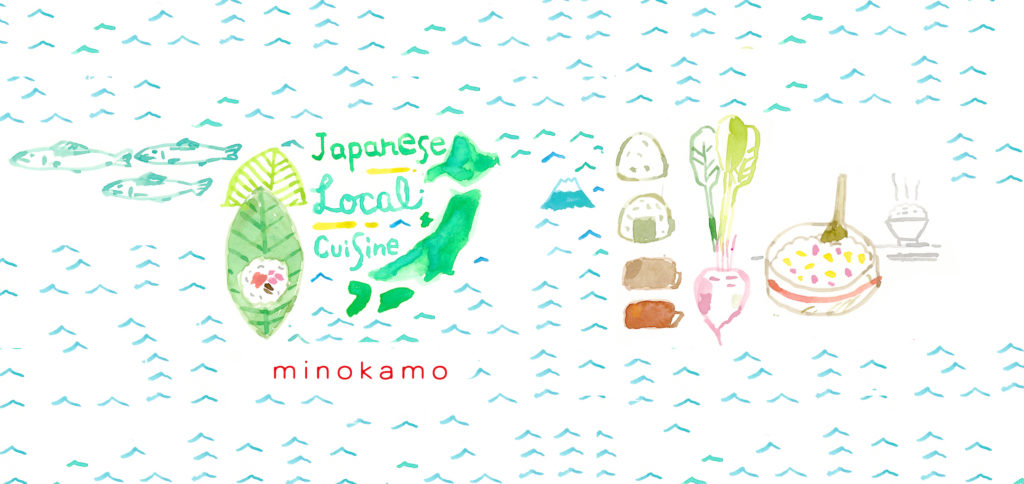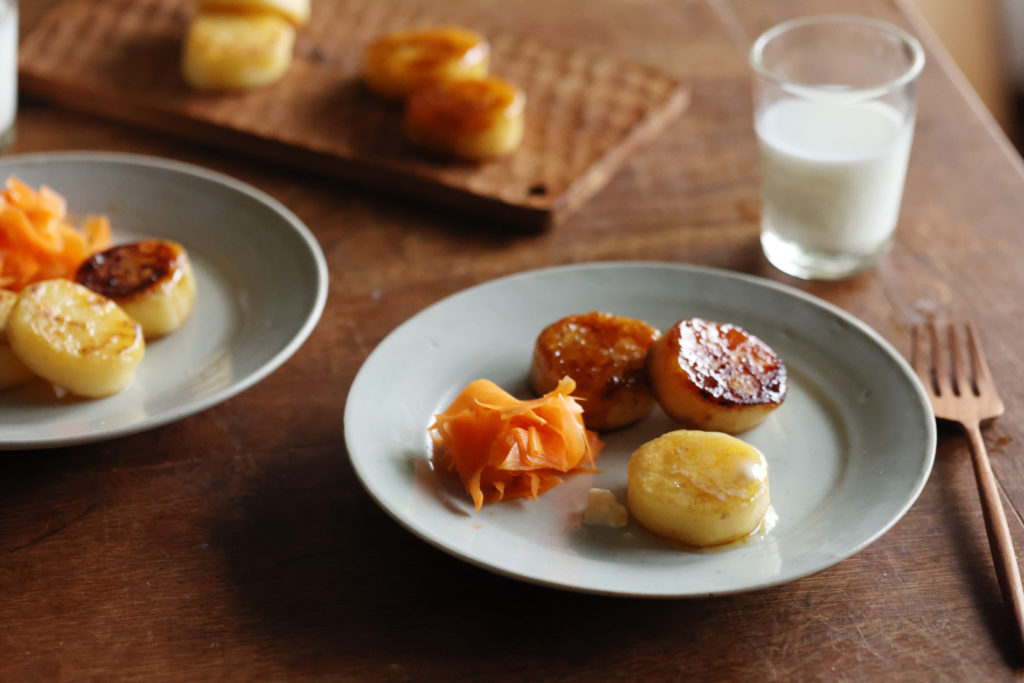
Ingredients (10 small pieces)
2 medium potatoes (total 300 g)
3 tbsp potato starch
15 g butter
1 tbsp soy sauce

How to make
1. Peel and quarter the potatoes, and place them in a pot. Add enough water to submerge the potatoes halfway, and cover the pot with a lid. Bring to a boil over high heat, then reduce to low-medium heat and steam until the potatoes can be pierced with a bamboo skewer. (Cooking time until the water is nearly gone is about 10 minutes.)
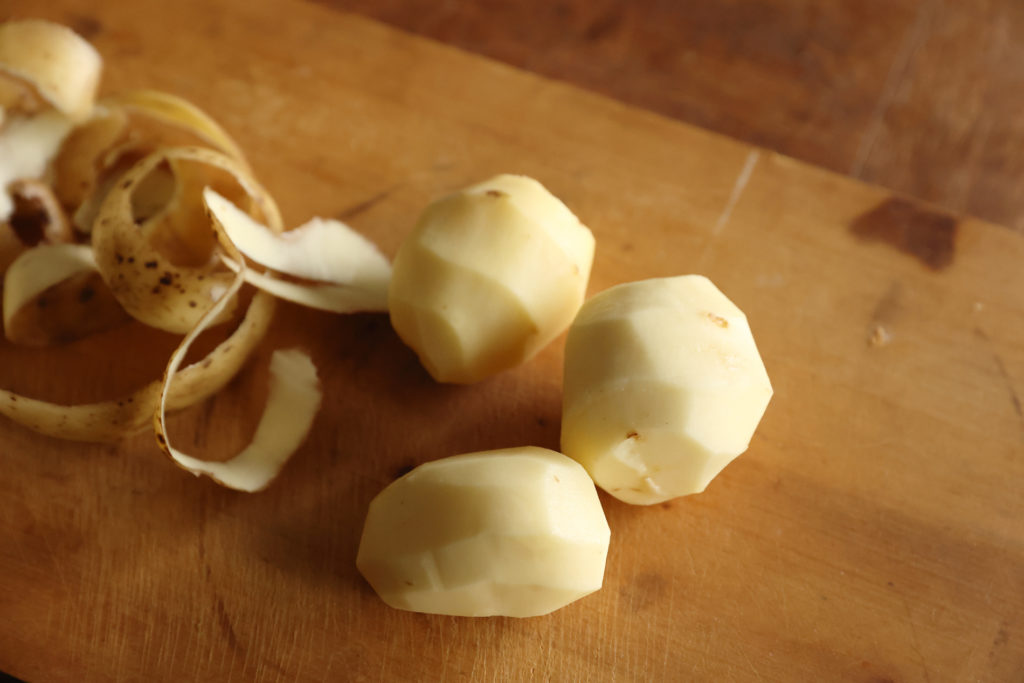
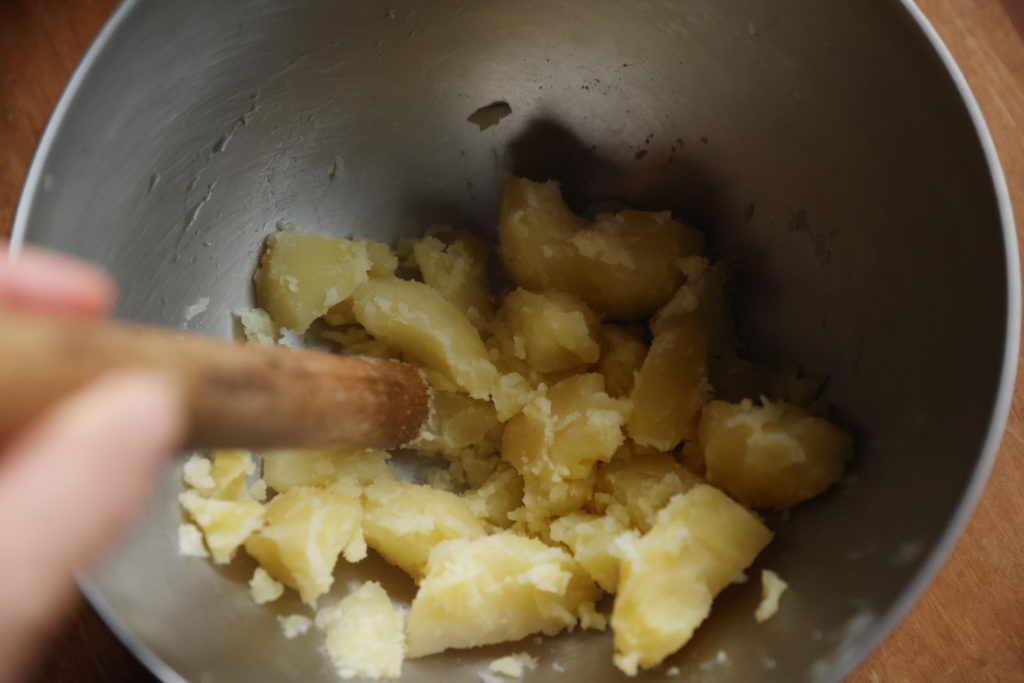
2. Drain any remaining water. Mash the potatoes while hot, and stir in the potato starch before the mash cools. Knead further by hand to form a ball of dough. Roll out the dough into a long strip and cut into 10 even rounds. Alternatively, pieces can be torn off, formed into balls, and flattened by hand.
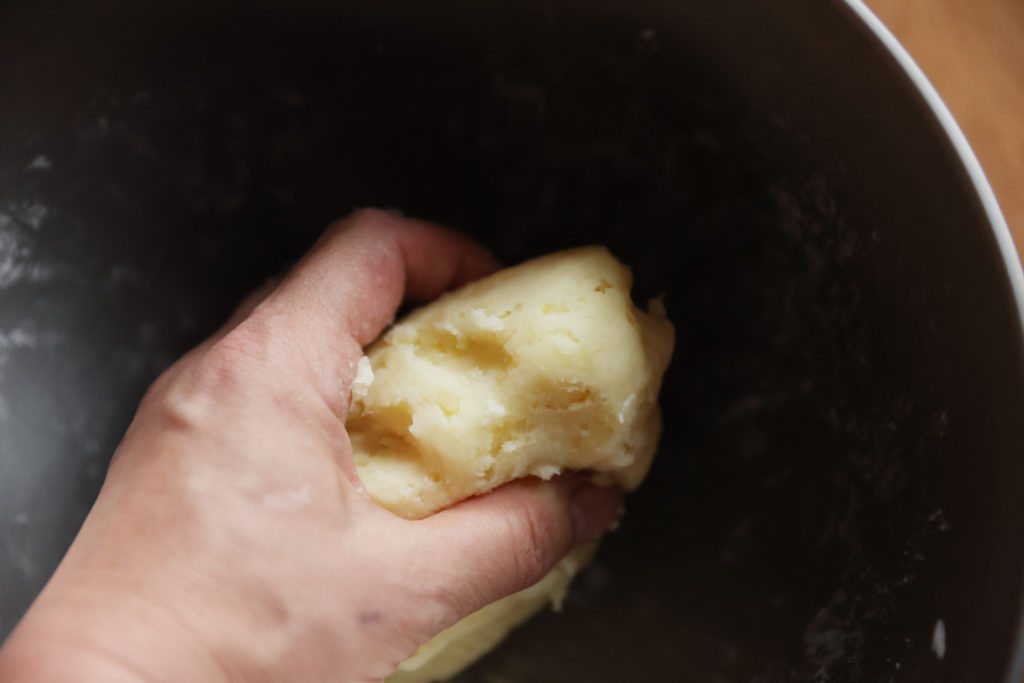
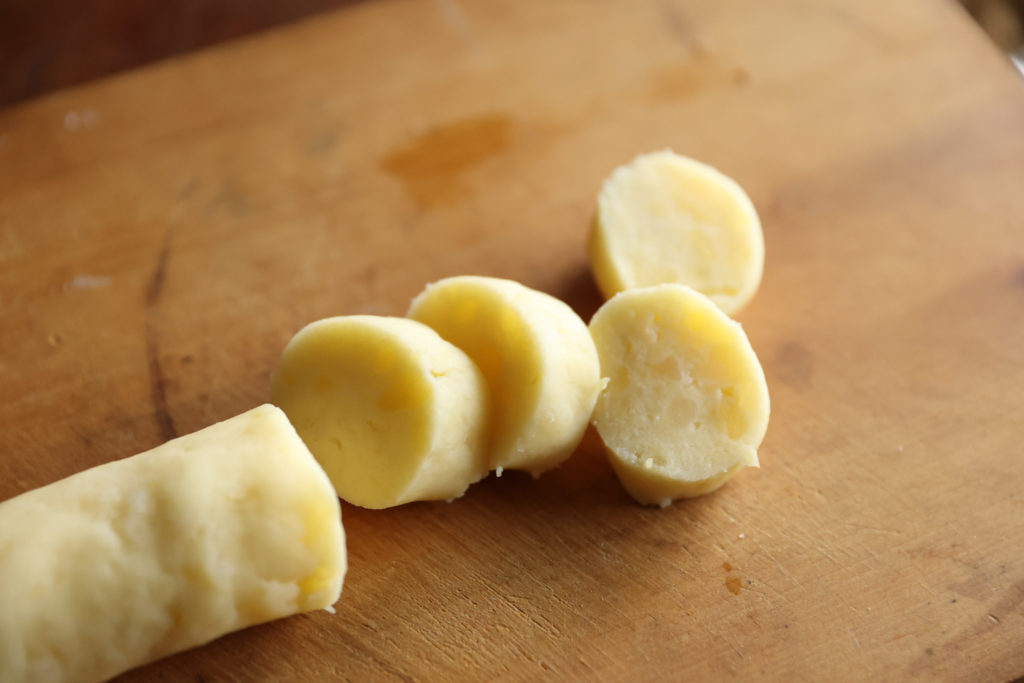
3. Heat the butter in a skillet, add the dough, and cook both sides over medium heat until fragrant. Place half of the imo-mochi on a serving dish, sprinkle with salt, and top with pats of butter (not in recipe). For the remaining half in the skillet, add sugar and soy sauce (satojoyu), stir, turn the heat off, and add to the serving dish.
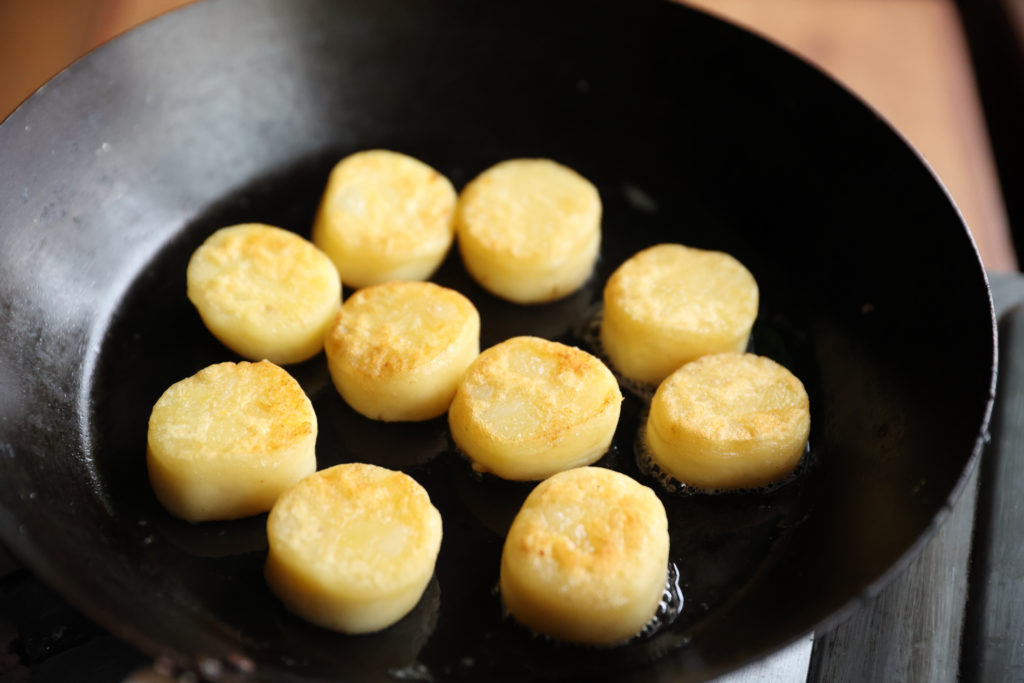
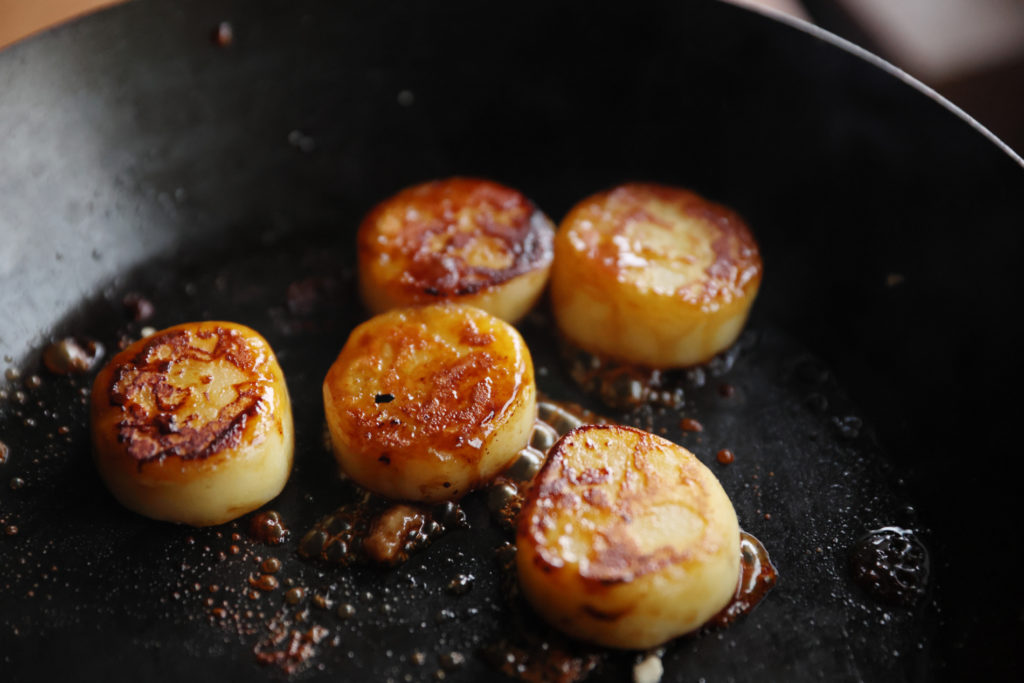
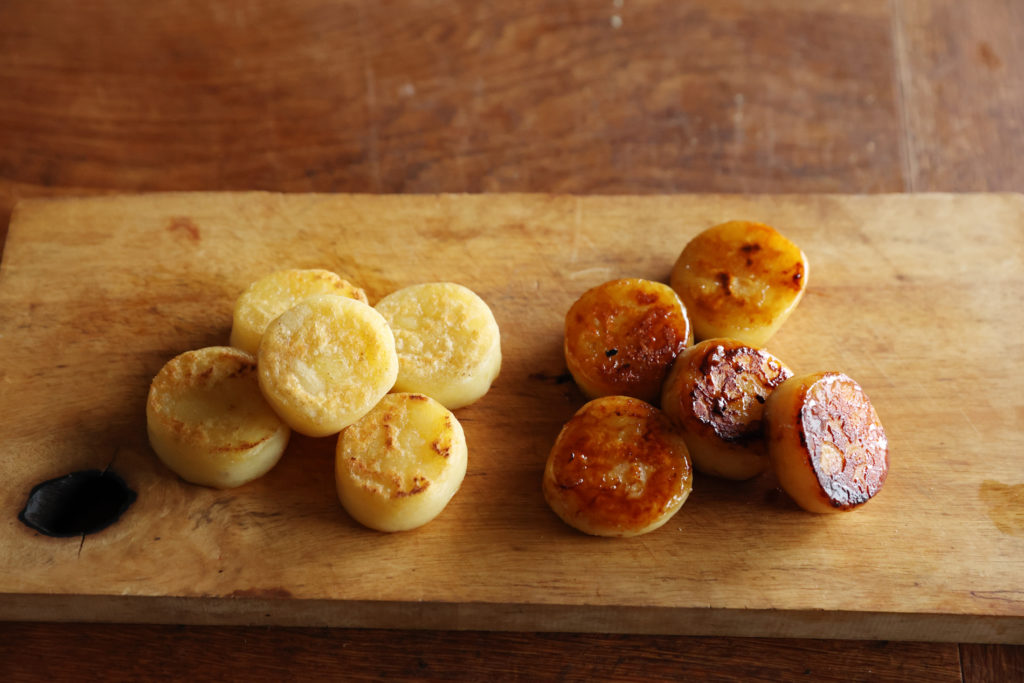

I discovered imo-mochi (potato rice cake) during a trip to Hokkaido. I was in a local eatery admiring the endless view of a ranch from my window seat and enjoying a steaming hot, sticky imo-mochi—what a luxury! Unlike now, originally, rice could not be grown in Hokkaido, and the main crops were potato, corn, and pumpkin introduced during the premodern Edo period (1603–1868). For special occasions, the indigenous Ainu people used grains and starch extracted from the bulbs of Turep to make dumplings called sito. But when potatoes became available, they switched to making their sito with potato. New migrants to Hokkaido thereafter also made the dish, called it imo-mochi, and enjoyed it in place of traditional mochi rice cake during the New Year holidays.
Imo-mochi can also be made with pumpkin. Some families keep batches frozen and ready to quickly cook and serve. My friend’s mother’s recipe calls for pumpkin and raisin. Imo-mochi is commonly seasoned with a sweet sauce, but it’s also delicious with salt and butter, or as an addition to your hotpot. It’s a handy food that can be served for snacks, as a light meal, and even with liquor.
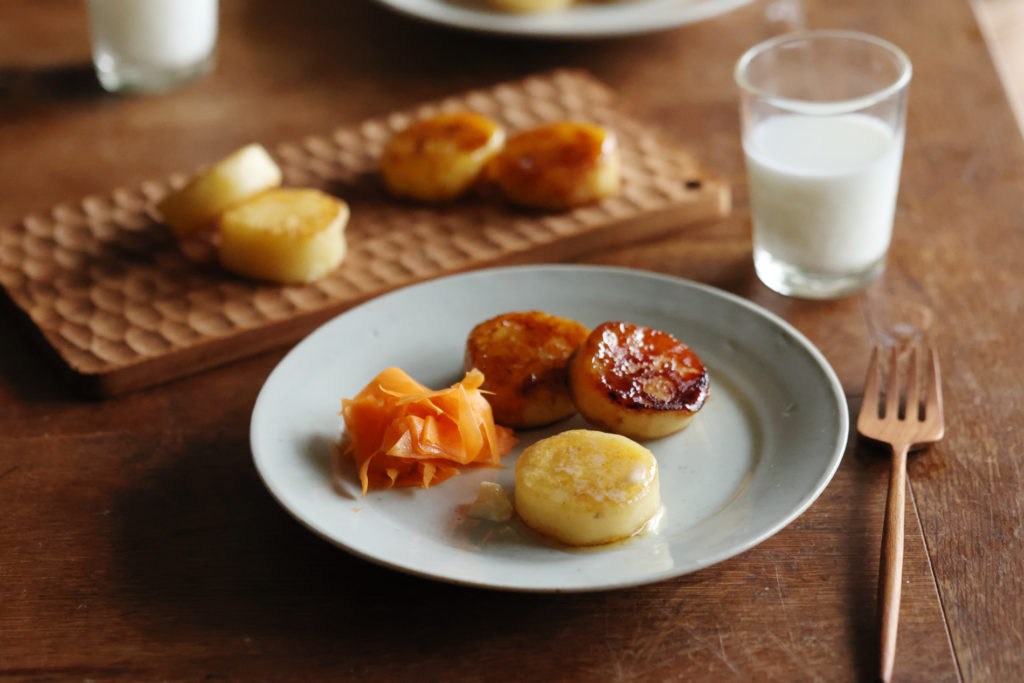
minokamo | Cookery expert / Photographer
Gifu Prefecture native minokamo’s culinary adventures were inspired by her fond childhood memories of cooking with her grandmother. She researches, writes about, and arranges regional dishes that capture, through their preparation and presentation, sensory enjoyments inspired by local climate, history, and lifestyles. Ryori tabi kara tadaima(Back from a Cooking Journey; Fudosha), published in September 2020, is a collection of recipes from minokamo’s visits to homes up and down Japan. Kona 100 mizu 50 de tsukuru suiton (Suiton Recipes—Flour 100 Water 50; Gijutsu-Hyoron) is now out.
